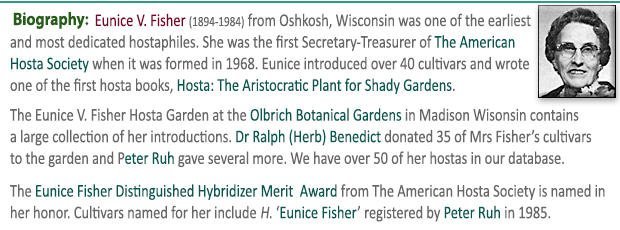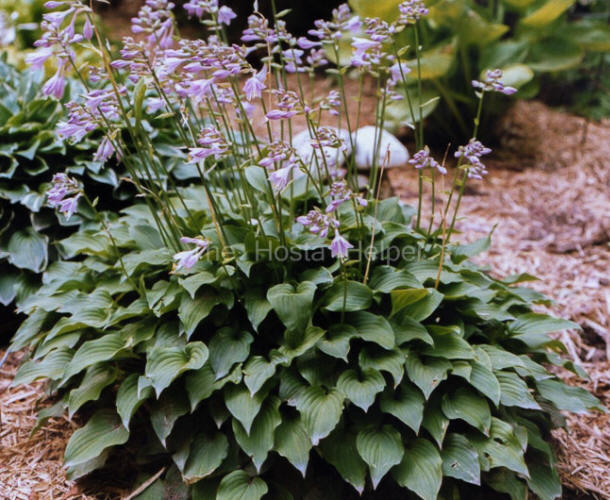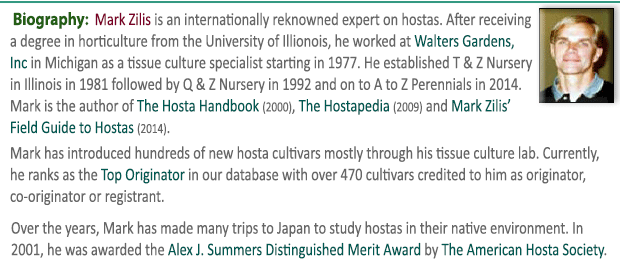|
 This species forms a dense,
small to medium size (10 to 12 inches high by 32 inches wide) mound
of heart-shaped, dark green foliage. The leaves are lightly wavy, smooth
textured and have average substance with purple dotted petioles.
Clusters of medium purple flowers with purple anthers bloom
on this species in July followed by viable seeds. The name means "ornamental
hair-piece" because the flowers resemble a traditional hairpin worn by Japanese
women. This species forms a dense,
small to medium size (10 to 12 inches high by 32 inches wide) mound
of heart-shaped, dark green foliage. The leaves are lightly wavy, smooth
textured and have average substance with purple dotted petioles.
Clusters of medium purple flowers with purple anthers bloom
on this species in July followed by viable seeds. The name means "ornamental
hair-piece" because the flowers resemble a traditional hairpin worn by Japanese
women.

According to
The Hostapedia by Mark Zilis (2009), "...such prominent hybridizers and
collectors as
Eunice V. Fisher, Robert Savory
of Savory's Gardens in Minnesota, Eldren Minks, Maxine Armstrong, and
Minnie
Klopping selected seedlings out of H. nakaiana and
introduced them as new cultivars."
It is a native to
Korea and
later naturalized in
Japan that
has been used in hybridizing many current hostas. According to
The Hostapedia by Mark Zilis (2009), this species has been known as H. 'Burke's Dwarf',
H. 'Krossa E6', H. 'Bell's Baby' and H. nakaimo minor
in the past.
The New Encyclopedia of Hostas by
Diana
Grenfell (2009) states: "Very floriferous, producing abundant seed from
which has emanated some very worthy hybrids. Scapes are noticeably ridged."

 An article by Robert Savory in
The
Hosta Journal (1985 Vol. 16) states that, "H. 'Golden
Tiara' appeared as a result of our propagation experiments using
H. nakaiana
seedlings in the 1970's. We wanted to increase the number of shoots of seedling
plants of H. nakaiana so we could hasten our crown-cutting propagation to meet
the heavy demand for them. We treated 750 H. nakaiana seedlings with a mixture
of hormones and vitamins in order to "break" more dormant eyes and to possibly
stimulate mutations in these highly desirable small-leaved hostas...H.
'Golden
Tiara' was one of several induced sports that appeared in this group." An article by Robert Savory in
The
Hosta Journal (1985 Vol. 16) states that, "H. 'Golden
Tiara' appeared as a result of our propagation experiments using
H. nakaiana
seedlings in the 1970's. We wanted to increase the number of shoots of seedling
plants of H. nakaiana so we could hasten our crown-cutting propagation to meet
the heavy demand for them. We treated 750 H. nakaiana seedlings with a mixture
of hormones and vitamins in order to "break" more dormant eyes and to possibly
stimulate mutations in these highly desirable small-leaved hostas...H.
'Golden
Tiara' was one of several induced sports that appeared in this group."








 |



